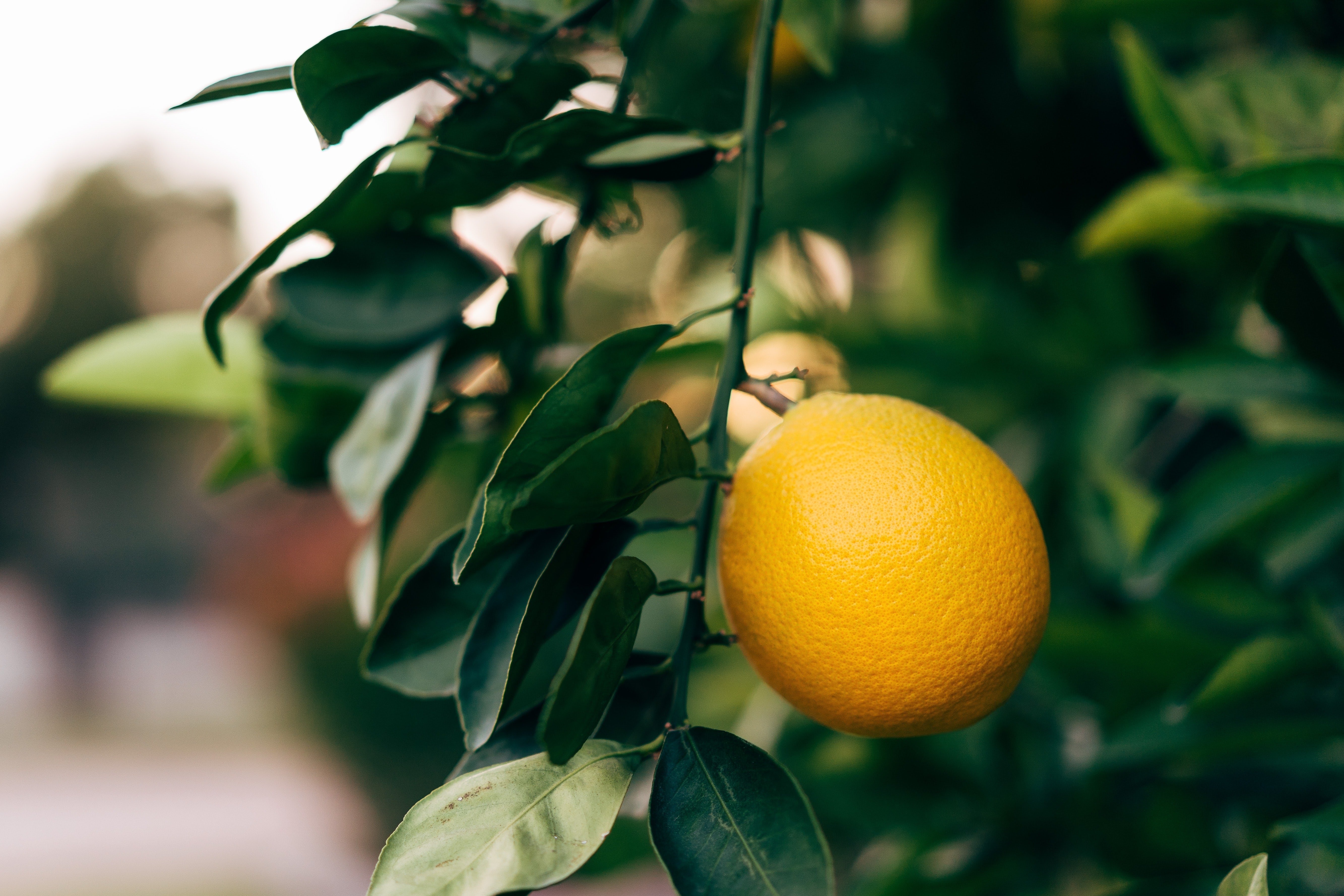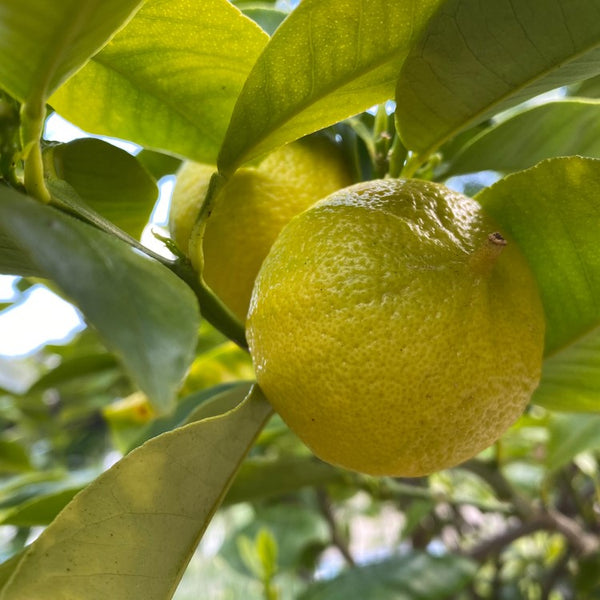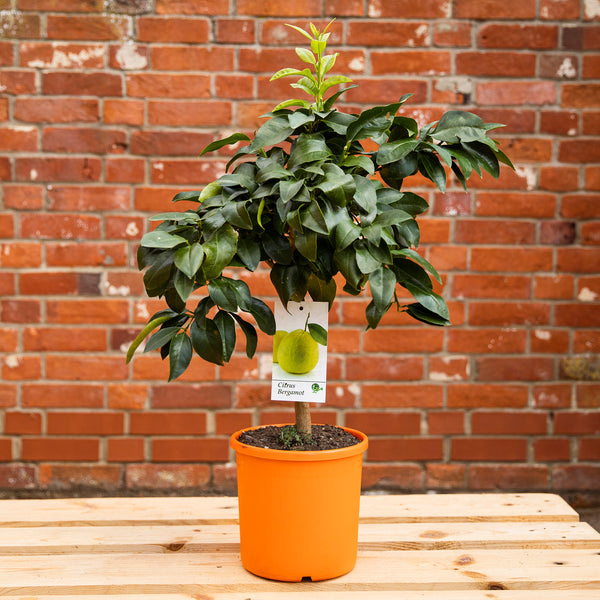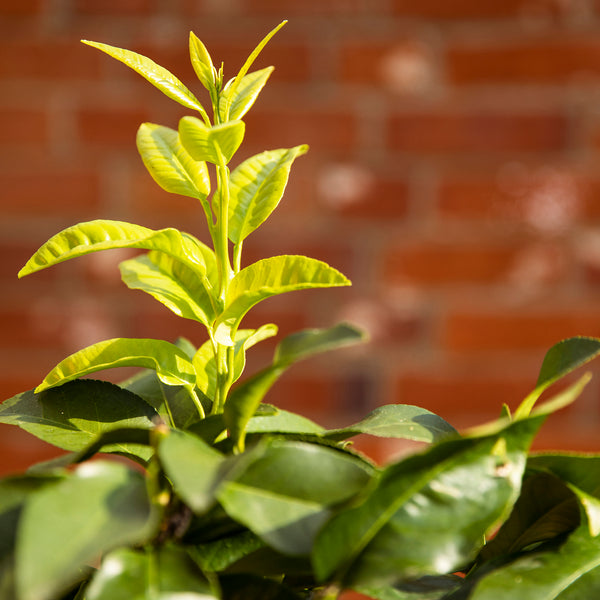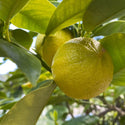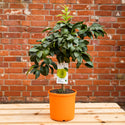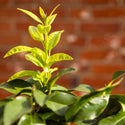Botanical name: Citrus bergamia
Ideal location & conditions: Full sun and sheltered position
Size after 5 years: 1m x 75cm
Soil: Very well drained John Innes No.3. Add additional grit and stone
Flower colour: Creamy white with violet centre
Flowering period: June - October
Fruit harvest period: November - March
Although usually referred to as an orange, Bergamot is a hybrid, probably somewhere between bitter orange (Citrus aurantium) and either lemon (Citrus medica) or maybe even lime (Citrus limetta). The scientists are still arguing over that one! Bergamot trees are reasonably dwarfing and compact in the way they grow, so are very suited to pot growing, and as a bonus, they have no spines. Hurrah! The fruits are slightly pear shaped and usually have a navel, so they're very good for contemplation!
There are not many of us brave enough to eat a Bergamot segment by segment, but they really come into their own when the rind, flesh or leaf are used to liven up a cup of hot water, made into jars of marmalade or used to add a zing to your Gin & Tonic. The rind is very oily and grating the zest fills the kitchen with a fantastic aroma. It was this rind-oil characteristic which Paolo Feminis spotted in 1676 when he was resident in Cologne. By all accounts, personal hygiene was not high on the list of those living in the 18th Century, so splashing on the Eau de Cologne to mask the pong soon became very popular. By 1709 Paolo’s son in law, Gian Maria Farina, had made his millions out of the stuff - genius!
Most of us have experienced Bergamot when drinking a cup of Earl Grey Tea, where the dried tea leaf is infused with some of the essential oil. You can do your own at home with either a Chinese Black Tea or an Indian Black Tea. Scrape some rind off the Bergamot and place it in a very low oven for while until it looks and feels really dry, or if the sun is really strong, dry it outside on a tray for a day or two. Place the dried Bergamot rind with the tea in a caddy and leave for a week or so. Make the tea in a pot in the normal way and the boiling water will release the oil in the rind. You can impress your friends with that one - dead posh don't you know! (personally, I like a good strong cup of builders but I urge you to give it a go!).
One of our other favourite Citrus, the Limetta Rosso has a very similar aroma to Bergamot and whilst their use is suitable as an alternative in the kitchen or in a Martini glass (any excuse!), extracting the essential oil for perfume is no where near as good as the true Bergamot. It's well worth trying the two varieties side by side though to see what you think.
Five reasons to plant a Bergamot:
• Very well suited to pot growing
• No prickly spines to negotiate
• The flowers and fruit smell AMAZING!
• Use in the kitchen to make your own marmalade, add the zest to savoury or sweet dishes or add to a Gin & Tonic for that special pizazz!
• Dry the rind to make your tea infusions

